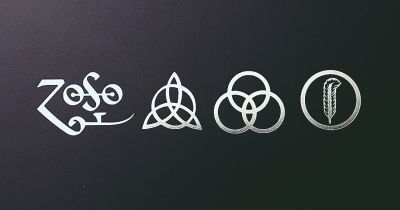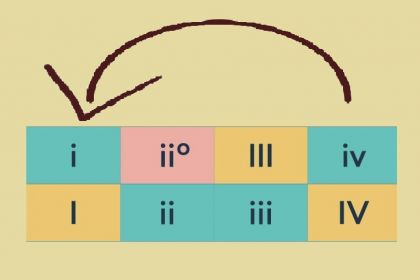Music Theory
Lydian mode in Led Zeppelin songs

Led Zeppelin Box Set cover
The musical output of the English rock band Led Zeppelin can be confidently classified as classically oriented. More than half of their tracks are accompanied by harmonic progressions that fully correspond to the tonal theory which could explain the continued popularity of the band's songs and the incredible number of covers recorded by other artists over half a century.
In Western music, all song forms are predominantly composed with the homophonic texture—a compositional technique that allows for a harmonious combination of a vocal melody with chord accompaniment. This classical approach was canonized four hundred years ago during the Baroque era and mainly implemented with six diatonic modes: the Ionian, Aeolian, Dorian, Phrygian, Lydian, and Mixolydian.
In the case of Led Zeppelin, the band clearly gravitated towards the major mood having written more than thirty songs in major modes and only a dozen tracks in the minor. This trend can also be seen in The Beatles' songs, whereas bands like Pink Floyd and The Doors have roughly equal numbers of minor and major compositions.
Of the three diatonic major modes, Led Zeppelin songs show a predominance of Ionian (22 tracks) and Mixolydian (12 tracks) modes, with Lydian major appearing only twice. The harmonic structure of the latter is analyzed in our article on popular songs using Lydian mode.
Occasionally appearing in the bridges of Led Zeppelin's Thank You, the Lydian mode clearly contrasts with other song sections with Mixolydian chord progressions. In the harmonic analysis of the song chord chains, the scale degrees (denoted with Roman numerals) show the following progression in D Mixolydian appearing in intro, verses, choruses, solo, and outro: D–C–G–D or I–VII–IV–I.
This very typical progression involving all the three major chords of the Mixolydian mode can also be seen in Grateful Dead's Scarlet Begonias, Queen's Seven Seas of Rhye, Neil Diamond's Longfellow Serenade, The Doors' The End, and Steve Young's Seven Bridges Road.
In Led Zeppelin's Thank You, the chord chain composed in D Lydian appears twice in the bridges: Bm–E–Bm–E–A or vi–II–vi–II–V. Note that the progression can also be attributed to the Dorian minor mode, assuming the tonal center is shifted towards the Bm minor chord. In this case, harmonic analysis of the chord chain shows the progression in B Dorian: Bm–E–Bm–E–A or i–IV–i–IV–VII.
Listen to Thank You by Led Zeppelin:
In a very similar way, the Lydian mode once wedges itself into Led Zeppelin's Down By The Seaside, mainly composed with a two-chord chain in the key of C major: C–F–C or I–IV–I.
The Lydian mode is seen at the end of the second verse (underlying the lyrics "so far away, so far away") with the Am chord accompanying the opening lines of the third verse. Then we see the following Lydian progression used twice: Am–D or vi–II.
After this deviation, the Ionian mode returns with a typical bluesy turnaround: F–G–F–C or IV–V–IV–I. The rest of the song invariably follows the initial Ionian two-chord formula.
As in the first example, the Am–D Lydian progression can be also interpreted as the Dorian mode with the Am tonal center: Am–D or i–IV.
Listen to Down by the Seaside (Remaster) by Led Zeppelin:
Explore how Led Zeppelin uses other musical modes in our articles:
- Dorian mode in Led Zeppelin songs
- No Quarter: two minor modal modes of Led Zeppelin's psychedelic track
Discover more songs composed in Lydian major mode and check out their harmonic analysis in the following articles:
- Beatles songs featuring Lydian mode
- Peace Frog: the only Doors song featuring Lydian mode
- Lost for Words: Pink Floyd's only Lydian song
- The Bells of Rhymney: two major modal modes of famous protest song
- Reelin' In the Years: the tandem of effective lyrics and one of the best guitar solos of all time



